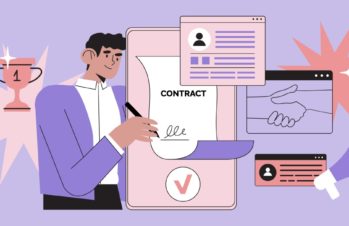Congratulations! You’ve scored an interview for an outlet that you’d love to see your name in, and the excitement is building up. Speaking with the media can be both nerve-wracking and thrilling at the same time. Interviews can make or break companies sometimes, so don’t take your preparation lightly.
I have seen seasoned CEOs who have done hundreds of interviews still make mistakes if they’re not properly prepared. Even if your interview is in one hour, there is a lot you can do to make sure you’re camera-ready. As the associate director of media relations at Zen Media, here are my top tips for why media training and research are essential (plus some common interview mistakes to avoid).
Embrace the Power of Media Training
When it comes to facing the media, being prepared is paramount. Media training is like a superhero costume that empowers you with the ability to handle interviews with confidence and finesse. It equips you with the necessary skills to effectively convey your message, control your body language, and handle challenging questions. Remember, the media spotlight can be intense, so investing in media training is a wise decision. Practice with a friend or family member, and be ready for questions that might catch you off guard.
Research, Research, Research
One of the biggest mistakes people make is underestimating the importance of thorough research. Dive into the topic you’ll be discussing in the interview. Know the ins and outs, recent developments, and key figures involved. Research the reporter who is interviewing you. What articles have they written in the past? How much do they know about the topic you will be discussing? What are the current interests that you can connect on? It shows your genuine interest and helps you speak confidently, impressing the interviewer and capturing their attention.
Prepare Your Talking Points
When you begin a media interview, make sure you have a few key talking points in mind. These are the main messages you want to convey or the ideas you want to emphasize. Stating your key messages at the beginning, end, and wherever else it makes sense is key. Repetition = more likely to be quoted in the article. These are the things you want to be quoted in the article when it is published. Organize your thoughts and practice expressing them concisely. Remember, brevity is key. Nobody wants to hear a rambling monologue!
Address Sensitive Topics with Care
Ideally, you will have done your homework and know what sensitive questions the reporter might ask, so don’t skip that crucial step! If a question arises that you’d prefer not to have on public record, you need to be able to pivot—but in a tactful way. Don’t let the reporter realize this is a sensitive topic by saying, “I have no comment on that.” With preparation for sensitive topics, you can have smart and honest pivot answers that move the conversation along. Some examples are, “I’ll need to check with my team and get back to you on that,” or instead of giving company specifics, say, “What the industry is seeing at the moment is [insert industry-relevant explanation.” Remember that you’re never truly ‘off the record,’ so anything you say could make it in print.
Practice Makes Perfect
We’ve all heard the saying, “Practice makes perfect,” and it couldn’t be more accurate for interviews. Gather friends, family members, or colleagues, and simulate a mock interview scenario. Not only will this help you refine your responses, but it will also boost your confidence. Pay attention to your body language, the speed of your speech, frequent verbal pauses like “uhm,” and hitting your key messages. Don’t be shy to ask for constructive feedback; it’s invaluable!
Beware of Verbal and Non-Verbal Blunders
Everyone has a word or action they do when public speaking or interviewing. Usually, it is “uhm” or “like” or staring off to the side to think. Avoid common verbal pitfalls like using excessive jargon, speaking too fast, or rambling off-topic. Keep your language clear, concise, and relatable. Additionally, non-verbal cues such as maintaining eye contact, sitting up straight, and smiling can leave a lasting positive impression, even if the interview is virtual.
Landing an interview is a golden opportunity, and with proper media training and preparation, you can form solid relationships with reporters and get positive coverage for you or your company. Active listening and maintaining flexibility will help you adapt to any situation. So, step into that interview confidently, knowing you’re equipped with the tools to shine brightly in the media spotlight. Good luck, and go rock that interview!







